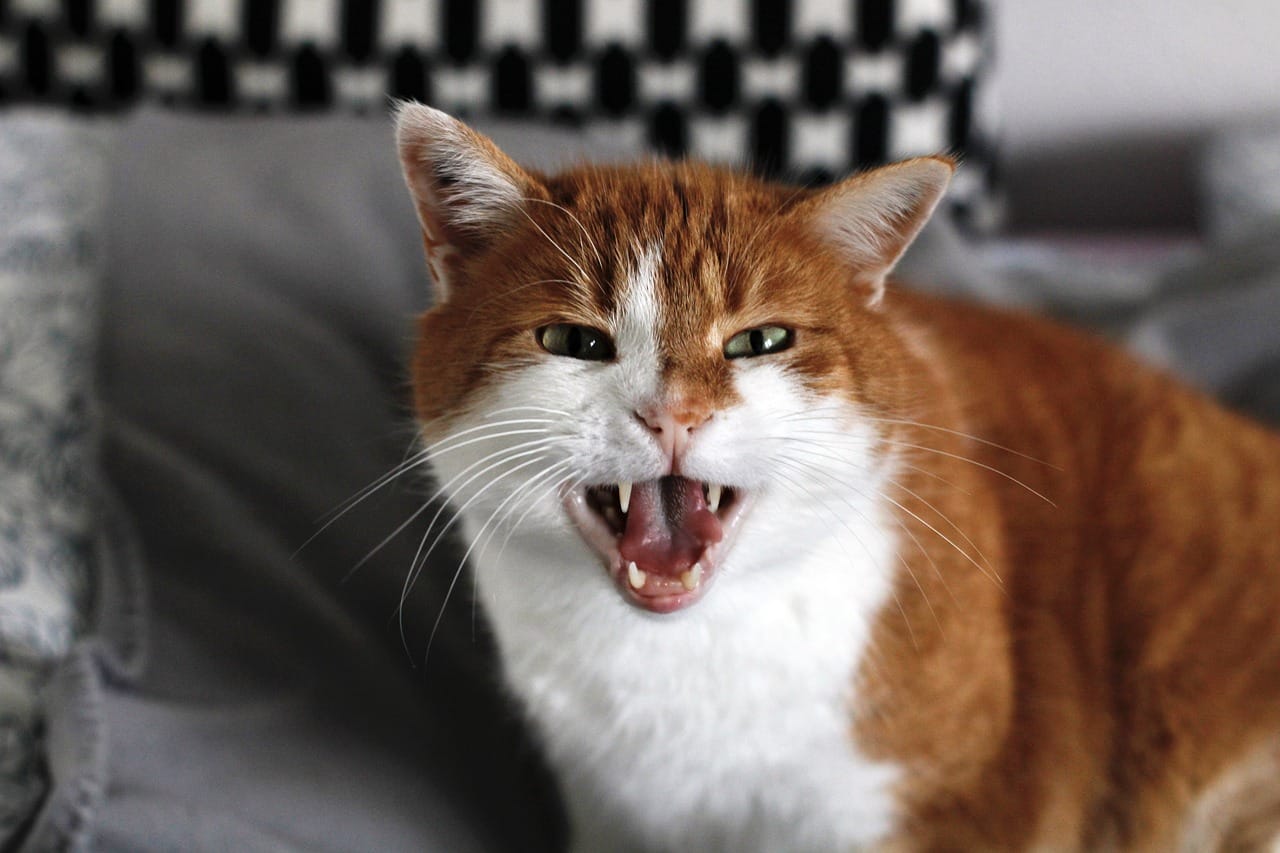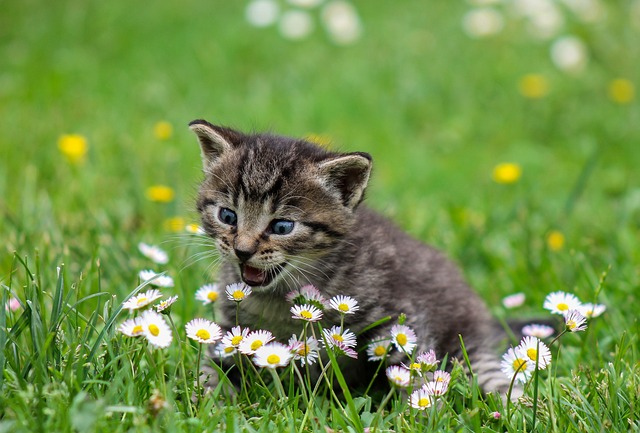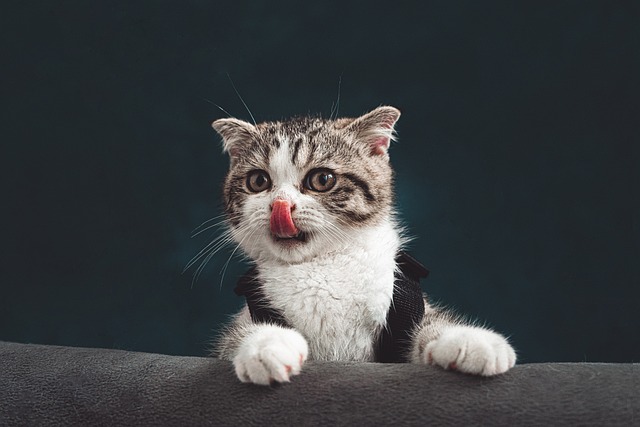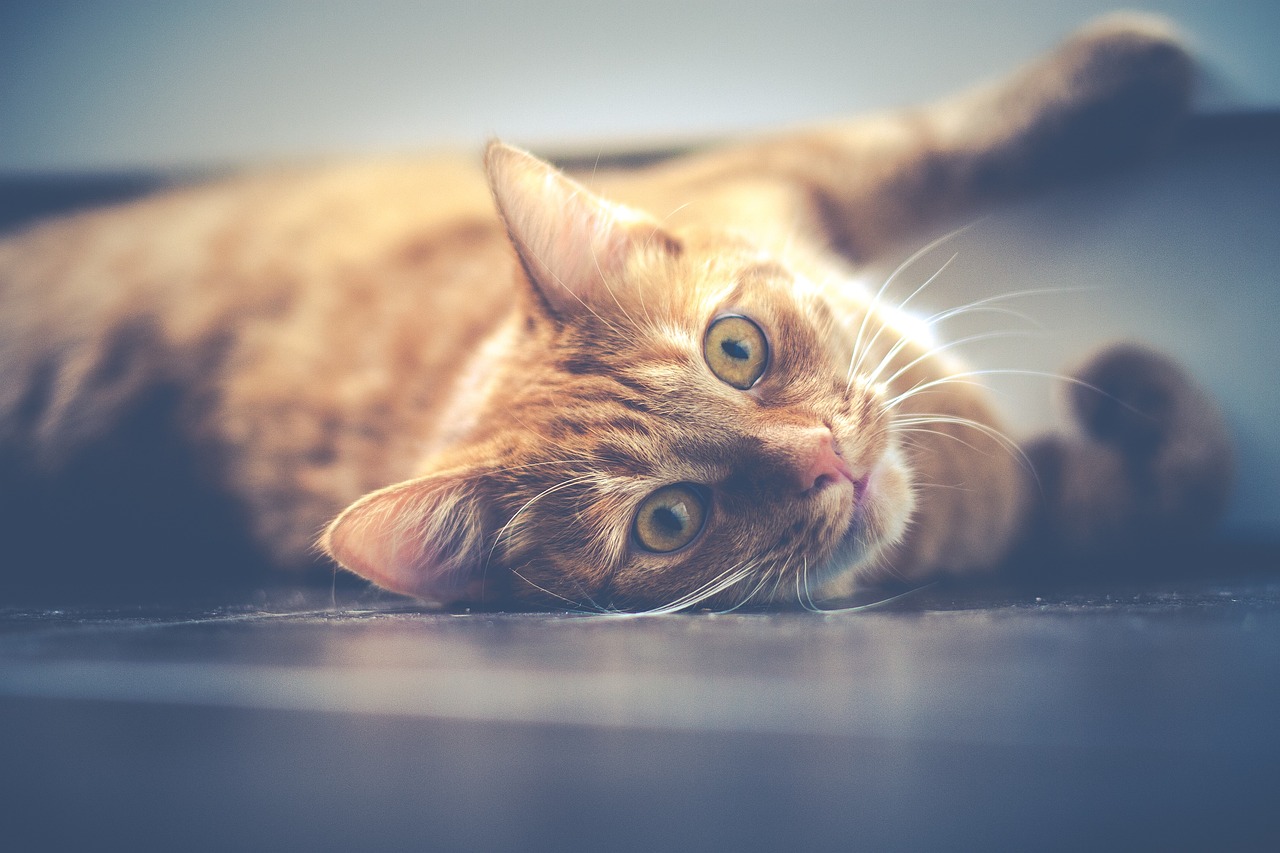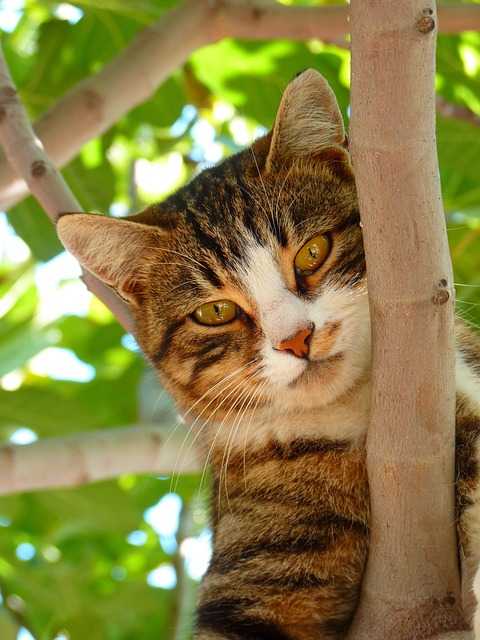Have you ever wondered what your feline friend is trying to tell you with those various meows, purrs, and chirps? Cats are masters of communication, and understanding their vocalizations can deepen your bond and strengthen your relationship. In this article, we’ll delve into the fascinating world of cat sounds, decoding their meanings, and exploring how you can better interpret your cat’s unique language.
1. Cat Language : Common Cat Sounds and Their Meanings
1. Meow:
The meow is perhaps the most recognized vocalization of cats. Contrary to popular belief, cats rarely meow at each other; instead, they reserve this form of communication for humans. The pitch, tone, and duration of a meow can convey a variety of messages. A short, high-pitched meow might mean a greeting or acknowledgment, while a persistent and drawn-out meow often signifies a request for attention, food, or interaction.
When Do They Make This Sound?
- When greeting their human companions.
- To request food or treats.
- Seeking attention or companionship.
- Expressing discomfort or annoyance.
- Vocalizing during playtime or interaction.
Different Types of Cat Vocalizations
1.Mew: A high-pitched meow, often with distinct vowel sounds like [i], [I], and [e], sometimes followed by [u]. The mouth is slightly open during this vocalization.
- Example: You might hear sounds like [me], [wi], or [mIu].
- Kittens use mewing to seek their mother’s attention or help, especially when they are cold, hungry, or distressed.
- Adult cats may mew to communicate with their human companions, seeking attention or assistance.
2.Squeak: This is a high-pitched, hoarse, and nasal variation of a meow, often brief and with vowels like [e] or [æ]. Squeaks usually end with an open mouth.
- Example: Listen for sounds like [wæ], [me], or [eu].
- Cats use squeaking as a friendly way to request attention or interaction.
3.Moan: A deep meow with a falling tone, often characterized by vowels such as [o] or [u].
- Example: You might recognize sounds like [mou] or [wuæu].
- Cats use moaning when feeling anxious or stressed, or when demanding something they desire.
4.Meow: The classic meow sound, typically with the [iau] sequence, used for various purposes:
- Example: Look out for sounds like [iau].
- Seeking attention, often signaling a desire for something specific.
- Declaring needs, such as an empty food bowl.
- Greeting or acknowledging the presence of others in a friendly manner.
5.Silent Meow: Cats open and close their mouths as if producing a meow but without audible sound, which could be part of cat-to-cat communication.
- Example: The silent meow is often observed during interactions between feral and domestic cats.
- This silent meow might involve sounds at frequencies humans cannot hear or could be a visual form of signaling that remains not fully understood in feline communication.
2.Purring:
The cat purr is a soft, low-pitched, continuous vibrating sound produced by domestic cats. The gentle rumble of a purr is a universal sign of contentment in cats. Cats often purr when they’re relaxed, happy, or seeking comfort. Interestingly, purring can also be a self-soothing mechanism during times of pain or distress.
When Do They Make This Sound?
- When being petted or cuddled.
- During moments of relaxation or rest.
- To communicate a sense of security and well-being.
- Sometimes when injured or in pain, as a method of self-calming.
- While nursing or being nursed by their mother.
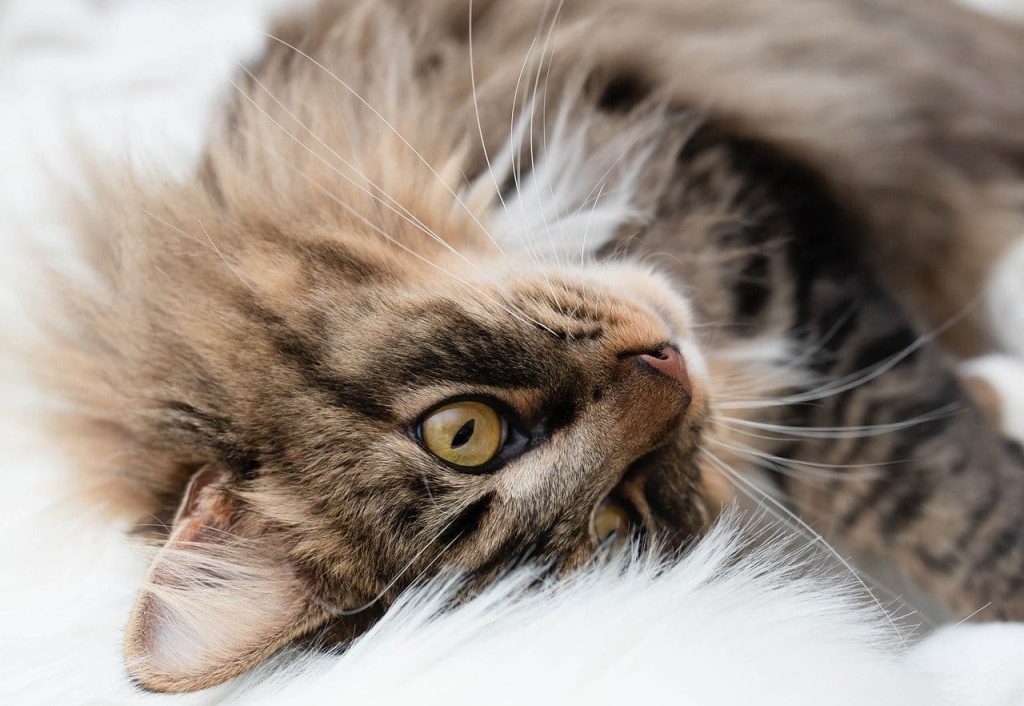
3.Chirruping and Trilling:
The chirrup is a soft, high-pitched sound that sounds like [mrrrh] or [brrh]. It’s often used by cats to express excitement or greet their owners.
Trilling is a melodic, rapid series of high-pitched sounds produced with the mouth slightly open, usually used as a friendly greeting or to get attention.
Brrping is a staccato-like vocalization, akin to a quick and abrupt meow, often employed by cats during play or when expressing eagerness. Cooing is a soft, gentle sound similar to a pigeon’s coo, typically used by cats when they are content, relaxed, or seeking comfort.
When Do Cats Use These Sounds?
- Chirrup:
- When greeting their owners or other cats.
- To express excitement or anticipation, such as before mealtime or playtime.
- Trill:
- As a friendly greeting to humans or other animals.
- When seeking attention or acknowledging someone’s presence.
- Brrp:
- During play sessions or moments of excitement.
- When anticipating food or treats.
- Coo:
- When feeling content and relaxed.
- While seeking comfort or affection from their owners.
4.Chirping and Chattering:
Have you ever noticed your cat making a rapid chirping or chattering sound while watching birds through a window? This behavior is thought to be an expression of excitement and frustration in cat language, often observed when a cat is unable to reach its prey.
When Do They Make This Sound?
- When observing prey, such as birds or squirrels from a distance.
- During play sessions with toys that mimic small prey.
- Exhibiting a mix of excitement and frustration.
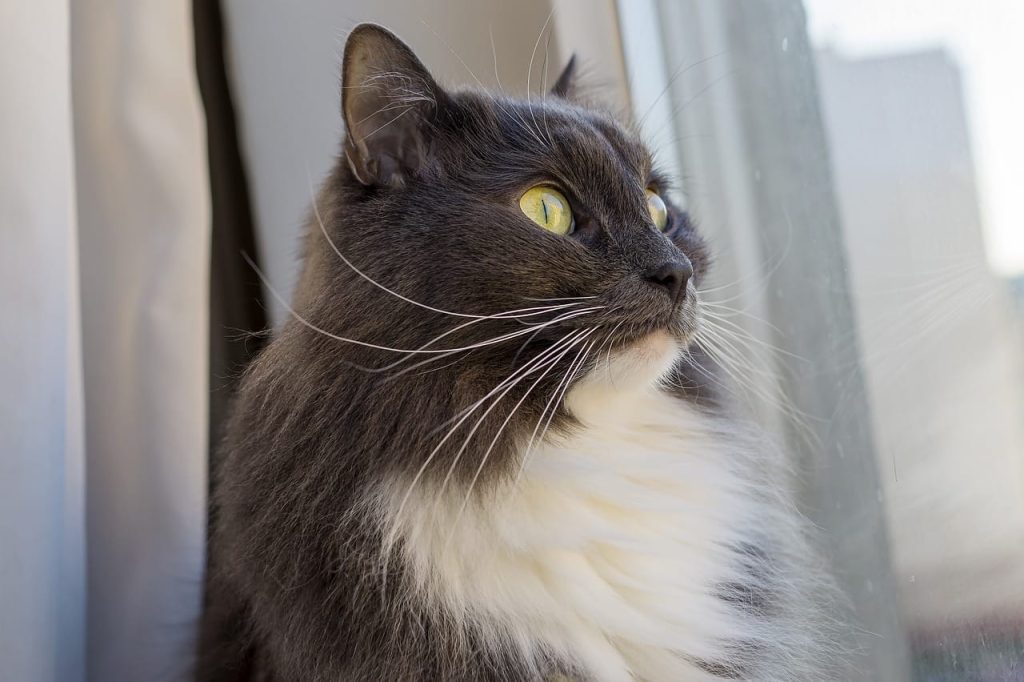
5.Yowl and Howl:
A yowl is a loud, drawn-out sound that can range from plaintive to intense, often indicating distress, discomfort, or a desire for attention. Cats may yowl when they are in heat, feeling territorial, or experiencing pain or illness. On the other hand, a howl is a deep, prolonged sound that can be similar to a yowl but with a more mournful tone. Cats may howl when they are feeling anxious, lonely, or disoriented. It’s important for cat owners to pay attention to these vocalizations as they can signify underlying issues that require attention or veterinary care.
When Do Cats Use These Sounds?
- Yowl: [Aaaoooowwwww]
- During mating season or when a female cat is in heat.
- When feeling threatened or challenged by other cats.
- In response to pain, discomfort, or illness.
- Howl: [Oooooooohhhhhh]
- When feeling lonely or isolated, especially at night.
- In older cats experiencing cognitive decline or confusion.
- Sometimes as a response to certain environmental stimuli that cause anxiety.
6. Hiss and Spit:
A hiss is a sharp, expelling sound produced by a cat to express aggression or ward off perceived threats. It is often accompanied by a posture where the cat arches its back, flattens its ears, and bares its teeth. A hiss may sound like [Pssst] or [Kissssh]. Cats may hiss when confronted by other animals, unfamiliar humans, or when they feel cornered or defensive.
Spit, also known as a spitting sound, is similar to a hiss but more intense. Cats typically spit as an escalated form of warning or aggression, often in response to intense fear or aggression from another animal or human.
When Do Cats Use These Sounds?
- Hiss:
- When feeling threatened or scared by other animals or unfamiliar humans.
- During territorial disputes or confrontations with other cats.
- In response to being handled or approached in a way that makes them uncomfortable or defensive.
- Spit:
- In extreme situations of fear or aggression.
- When feeling cornered or trapped.
- As a defensive warning to deter potential threats.
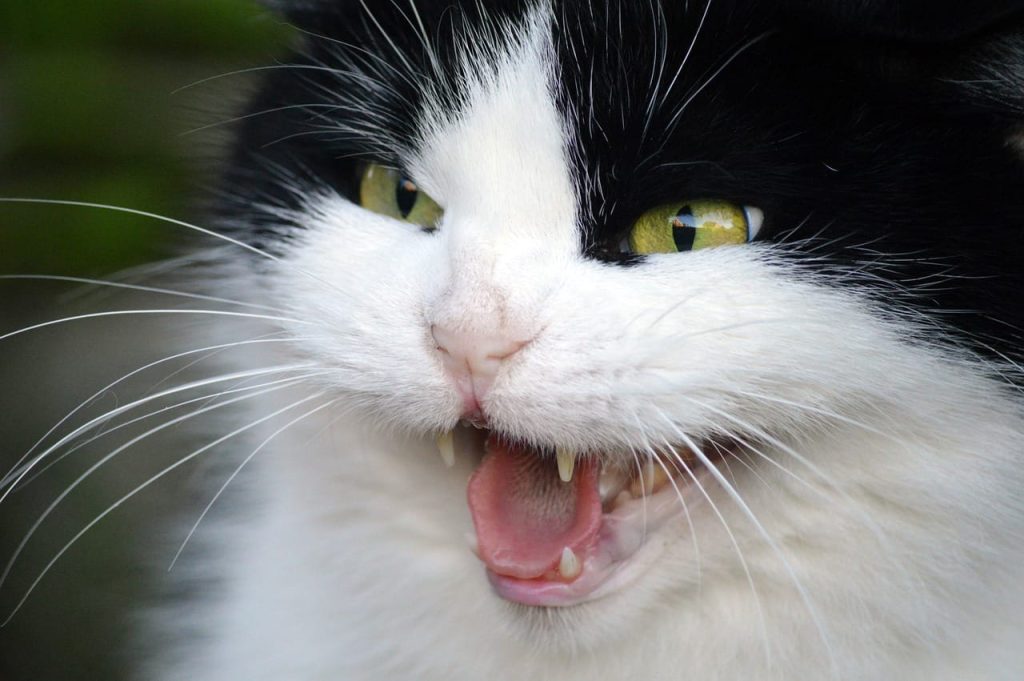
7.Growling:
These sounds are clear indicators of fear or aggression in cats. When a cat feels threatened or territorial, it may growl to warn intruders or potential threats to back off.
When Do They Make This Sound?
- When feeling threatened by another animal or unfamiliar person.
- Protecting their territory or personal space.
- During encounters with perceived threats or challenges.
- When in pain or discomfort and feeling defensive.
8.Snarl , Cry and Shriek:
The snarl, cry, scream, and pain shriek are loud, high-pitched sounds that cats produce when they are in pain, frightened, or urgently seeking help. These vocalizations are distinct from normal meows and indicate immediate distress or danger. A pain shriek is a sharp, piercing cry that cats make in response to acute pain or injury, signaling the need for urgent attention and intervention.
When Do Cats Use These Sounds?
- In response to being handled in a way that triggers defensive behavior.
- When experiencing sudden pain, such as from injury or illness.
- During frightening or traumatic situations, such as being trapped or attacked.
- To seek help or attention when feeling distressed or frightened.
- In response to acute physical pain, such as from a wound, injury, or medical condition.
- As a clear signal that immediate medical attention is needed.
2. How to Speak Cat Language
As humans, we can use certain sounds and vocal cues to communicate specific feelings and messages to our cats, effectively “speaking” their language to enhance our interactions. For instance, mimicking friendly chirrups or trills can convey affection and greetings to our cats, encouraging positive responses and strengthening our bond. Using soft and gentle meows can signal reassurance and comfort, particularly during moments of interaction or when approaching a nervous or wary cat. Additionally, responding with calm and soothing tones when a cat hisses or shows signs of distress can help alleviate tension and convey a sense of safety. By mirroring or adapting to our cats’ vocalizations and body language, we can foster clearer communication and mutual understanding, ultimately enriching our relationships with these unique and expressive companions.
3. Learning Your Cat’s Unique Communication Style
Every cat has its own personality and communication style. Spend time observing and learning your cat’s specific vocalizations and behaviors. This will help you respond more effectively to their needs and preferences, fostering a closer and more trusting relationship.
Conclusion
Deciphering cat sounds is like unlocking a secret code to your feline companion’s thoughts and emotions. By paying attention to their meows, purrs, and other vocalizations, along with their body language, you can become fluent in cat language. Take the time to engage with your cat on their terms, and you’ll find that your bond grows stronger with each meaningful interaction.
Understanding cat language is not just about deciphering sounds; it’s about building a deeper connection with your beloved pet. So, the next time your cat meows or purrs, take a moment to listen and respond accordingly—you might just discover a whole new level of communication with your feline friend.
How to Understand Cat body language and communication ?

